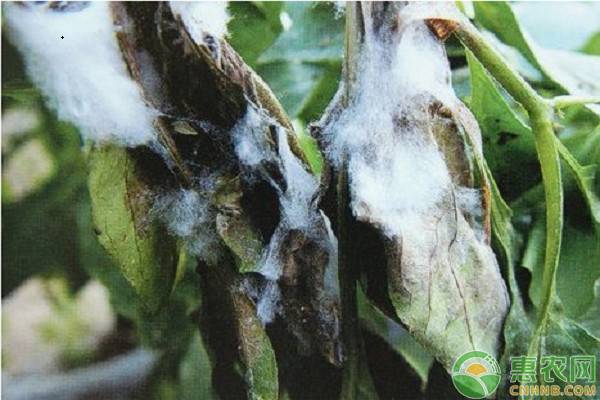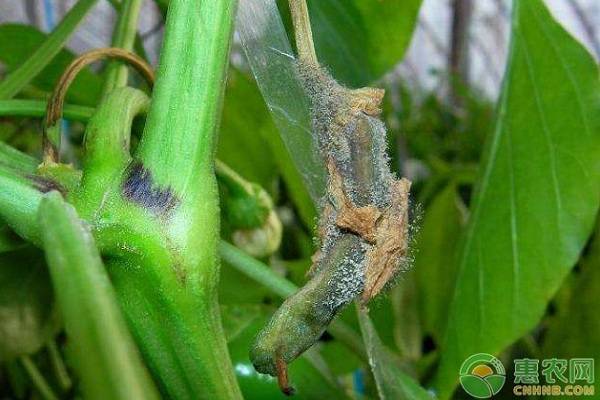What is the difference between pepper blight and sclerotinia? These two diseases are believed to be no stranger to the big pepper growers. In the process of contact, they have encountered these two diseases. How do you prevent them? Capsicum blight and sclerotinia have been common in recent years. Because the symptoms of these two diseases are similar and difficult to distinguish, vegetable farmers often misdiagnose. The characteristics and prevention measures of the two diseases of pepper are described below. 1 symptom recognition 1.1 disease It can occur throughout the growing season. At the seedling stage, the water base of the stem is rotted and collapses; the leaf lesions are dark green water stains, which rapidly expand, causing some or most of the leaves to be softly rotted. After drying, the lesions are light brown and the leaves are off; the stems are damaged. Similar to the leaf, it also produces water-stained lesions. In the later stage, the diseased part becomes dark brown, and the cortex softens and rots. It is often broken from the diseased part; the fruit disease begins in the pedicle, and the water-stained spots appear first, dark green, after The lesions spread rapidly. When the humidity is high, the surface grows white mildew layer. After drying, it forms dark brown fruit and remains on the branches. The diseased fruit is susceptible to secondary infection by bacteria and produces abnormal smell. 1.2 Sclerotinia Harm the pepper throughout the growing season. At the beginning of the seedling stage, the base of the stem was water-stained and light brown, and then turned brown. When wet, the cortex rots, the white mycelium grows, it is grayish white after drying, the stem becomes thinner, and finally the whole plant dies; the adult stage mainly occurs at the stem and branch at 5-20 cm from the ground, and the disease is initially water. It has a pale brown spot and turns grayish white. It expands to the top and bottom of the stem. When the humidity is high, the white mycelium inside and outside the diseased part, the cortex of the stem is mildewed, and many black rat fecal sclerotia are formed. Falling leaves, withered and dead; fruit infected, the fruit surface turns brown first, it is water-stained and rot, gradually expanding to the whole fruit, and some first spread from the umbilicus to the fruit pedicle to the whole fruit rot, the surface grows white mycelium, After the formation of black irregular sclerotia, causing fruit drop. There is no stench in this disease. 2 disease conditions The growth and development of the pathogens are 30 °C, and the relative humidity is higher than 85%. The terrain is low, the water is accumulated, the water is not properly accumulated in the field, the planting is too dense, and the vegetable fields with poor ventilation and light transmission are seriously affected. Sclerotinia sclerotior is mainly caused by sclerotia in the soil or mixed with seeds in summer or winter. In our county, the peak of sclerotinia disease occurs in April-May, the humidity is high, the shed is not ventilated, and the continuous crops are seriously affected. . 3 routes of transmission The seed carries pathogens, and the pathogens in the soil are transmitted by airflow, rain, irrigation or farming operations, and are transmitted to the base of the plant stem or near the ground. 4 prevention measures 4.1 Agricultural control 1Select resistant varieties, such as Dujiao No.1 and Haifeng No.6. 2 seed disinfection. The seeds are dried for 2 to 3 days before sowing. Seeds are placed in warm water of about 55 °C for 30 minutes or pre-soaked with water for 10 to 12 hours. Soak them with 1% copper sulfate solution for 5 minutes. After picking up, mix a small amount of grass ash. 3 cultivate disease-free and strong seedlings and improve the disease resistance of plants. Seedlings with disease-free soil, no seedlings of the Solanaceae crops before and after planting, soil disinfection before sowing, using 25% carbendazim wettable powder into the soil, or 40% formalin 20-30ml / square meters with water 2.5 ~ 3L, evenly sprayed on the soil surface, fully mixed and stacked, covered with film, after 2 to 3 days to uncover the cover, spread the soil, air for 15 to 20 days after the drug is emitted , then planting or planting. 4 Strengthen field management and clean the countryside in time. After the seedlings enter the branches and leaves and the fruit grows vigorously, rational fertilization, application of fully decomposed organic fertilizer. The rainy season controls the amount of watering, pay attention to ventilation and light transmission, and prevent the humidity in the field or greenhouse from being too high. And timely cultivating and cultivating soil to promote root growth. 5 It is found that the diseased plants should be removed or cut off in time, and the diseased plants should be brought to the vegetable field for burning or deep burial. The soil around the diseased plant is limed to prevent the spread of the disease. 4.2 Chemical control Before and after the onset of Sclerotinia sclerotiorum, spray 50% carbendazim wettable powder 800-1000 times liquid, or 50% quick-krining 1500-2000 times liquid, once every 10 days, even spray 2~3 times. For the prevention and treatment of epidemic diseases, roots were irrigated with 25% toxic mycelium or 75% metalaxyl 800 times before planting, and once every 5 to 7 days. After the implantation, 80% of the sensitized zinc 600 times solution can be sprayed before the onset of the disease, once every 15 days. In the early stage of the disease, 75% chlorothalonil 600 times solution can be used, and 40 kg per 667 square meters can be sprayed once every 7 to 10 days for 2 to 3 times. For the wonderful pictures and hot comments on the identification and control of pepper blight and sclerotinia, you may be interested in the following recommended contents. Welcome to read. Wet Chemical Fire Extinguisher Wet Chemical Fire Extinguisher,Chemical Fire Extinguisher,Chemical Extinguisher,Foam Type Fire Extinguisher JIANGSU NEW FIRE FIGHTING TECHNOLOGY CO.,LTD , https://www.ffo2cylinder.com

